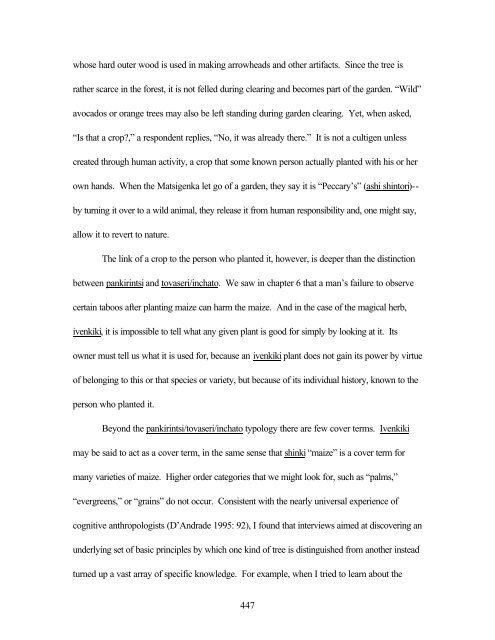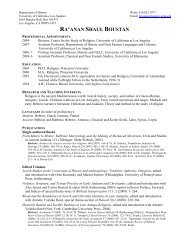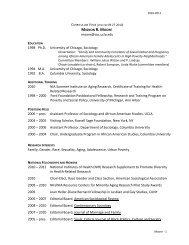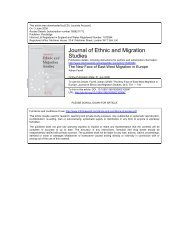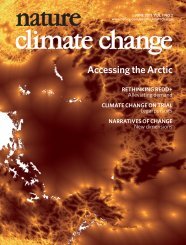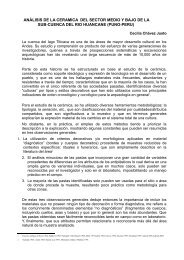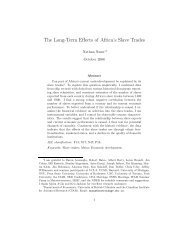433 Chapter Seven Cosmos For the Matsigenka of Shimaa, kameti ...
433 Chapter Seven Cosmos For the Matsigenka of Shimaa, kameti ...
433 Chapter Seven Cosmos For the Matsigenka of Shimaa, kameti ...
Create successful ePaper yourself
Turn your PDF publications into a flip-book with our unique Google optimized e-Paper software.
whose hard outer wood is used in making arrowheads and o<strong>the</strong>r artifacts. Since <strong>the</strong> tree is<br />
ra<strong>the</strong>r scarce in <strong>the</strong> forest, it is not felled during clearing and becomes part <strong>of</strong> <strong>the</strong> garden. “Wild”<br />
avocados or orange trees may also be left standing during garden clearing. Yet, when asked,<br />
“Is that a crop?,” a respondent replies, “No, it was already <strong>the</strong>re.” It is not a cultigen unless<br />
created through human activity, a crop that some known person actually planted with his or her<br />
own hands. When <strong>the</strong> <strong>Matsigenka</strong> let go <strong>of</strong> a garden, <strong>the</strong>y say it is “Peccary’s” (ashi shintori)--<br />
by turning it over to a wild animal, <strong>the</strong>y release it from human responsibility and, one might say,<br />
allow it to revert to nature.<br />
The link <strong>of</strong> a crop to <strong>the</strong> person who planted it, however, is deeper than <strong>the</strong> distinction<br />
between pankirintsi and tovaseri/inchato. We saw in chapter 6 that a man’s failure to observe<br />
certain taboos after planting maize can harm <strong>the</strong> maize. And in <strong>the</strong> case <strong>of</strong> <strong>the</strong> magical herb,<br />
ivenkiki, it is impossible to tell what any given plant is good for simply by looking at it. Its<br />
owner must tell us what it is used for, because an ivenkiki plant does not gain its power by virtue<br />
<strong>of</strong> belonging to this or that species or variety, but because <strong>of</strong> its individual history, known to <strong>the</strong><br />
person who planted it.<br />
Beyond <strong>the</strong> pankirintsi/tovaseri/inchato typology <strong>the</strong>re are few cover terms. Ivenkiki<br />
may be said to act as a cover term, in <strong>the</strong> same sense that shinki “maize” is a cover term for<br />
many varieties <strong>of</strong> maize. Higher order categories that we might look for, such as “palms,”<br />
“evergreens,” or “grains” do not occur. Consistent with <strong>the</strong> nearly universal experience <strong>of</strong><br />
cognitive anthropologists (D’Andrade 1995: 92), I found that interviews aimed at discovering an<br />
underlying set <strong>of</strong> basic principles by which one kind <strong>of</strong> tree is distinguished from ano<strong>the</strong>r instead<br />
turned up a vast array <strong>of</strong> specific knowledge. <strong>For</strong> example, when I tried to learn about <strong>the</strong><br />
447


